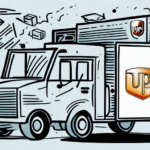Maximizing Efficiency with Delivery Management
In today's competitive business environment, companies must deliver high-quality products efficiently and cost-effectively to stay ahead of the competition. Implementing a comprehensive delivery management system is a strategic approach to achieving this goal. This article explores the importance of delivery management, its operational mechanisms, impact on customer satisfaction, key benefits, software selection criteria, best practices, integration strategies, case studies, future trends, challenges, and methods to measure return on investment (ROI).
Understanding the Importance of Delivery Management
Delivery management is a critical component for businesses that depend on the timely and accurate delivery of products to customers. It encompasses the planning, coordination, execution, and monitoring of all delivery activities, including scheduling drivers and routes, tracking shipments, and communicating with customers. Effective delivery management optimizes logistics operations, reduces costs, enhances customer satisfaction, and provides a competitive advantage.
According to a Forbes article, businesses that implement robust delivery management systems can increase delivery efficiency by up to 25%, resulting in significant cost savings and improved service quality.
Key Benefits of Effective Delivery Management
- Increased Visibility and Control: Real-time tracking and monitoring allow businesses to swiftly identify and address issues such as delays or delivery errors.
- Route Optimization: Utilizing data analytics and route optimization software helps in identifying the most efficient routes, reducing fuel costs and delivery times.
- Enhanced Customer Satisfaction: Providing customers with up-to-date information on their orders improves transparency and trust.
- Cost Reduction: Optimized delivery operations can lead to lower fuel consumption, reduced labor costs, and minimized environmental impact.
How Delivery Management Works
Delivery management involves several interconnected processes that work together to ensure efficient logistics operations:
Core Processes in Delivery Management
- Order Management: Handling order processing, inventory management, and order fulfillment.
- Route Planning and Optimization: Designing the most efficient delivery routes based on various factors like traffic, distance, and delivery windows.
- Vehicle and Driver Management: Scheduling and managing the fleet and drivers to align with delivery demands.
- Real-Time Tracking: Monitoring deliveries in real-time to ensure timely deliveries and address any disruptions promptly.
- Proof of Delivery: Providing verification of delivery through digital signatures or photographs.
- Customer Communication: Keeping customers informed about their delivery status through updates and notifications.
Delivery management software plays a pivotal role in automating these processes, reducing manual errors, and enhancing overall efficiency. Features such as real-time tracking, automated dispatching, and data analytics empower businesses to make informed decisions and optimize their delivery operations.
The Impact of Efficient Delivery Management on Customer Satisfaction
Customers today expect fast, reliable, and transparent delivery services. Efficient delivery management directly influences customer satisfaction by ensuring that orders are delivered on time and correctly. A study by PwC indicates that 73% of consumers consider customer experience a crucial factor in their purchasing decisions.
Enhancing Customer Experience
- Real-Time Tracking: Allows customers to monitor their orders in real-time, reducing uncertainty and increasing trust.
- Timely Deliveries: Ensures that products reach customers within the promised timeframe, fostering reliability.
- Accurate Deliveries: Minimizes errors in order fulfillment, preventing customer dissatisfaction due to incorrect items.
- Proactive Communication: Keeps customers informed about any delays or issues, demonstrating transparency and accountability.
By meeting and exceeding customer expectations, businesses can build loyalty, encourage repeat business, and generate positive word-of-mouth referrals.
Choosing the Right Delivery Management Software
Selecting the appropriate delivery management software is crucial for achieving optimal logistics performance. Here are key factors to consider:
Essential Factors for Software Selection
- Compatibility: Ensure the software integrates seamlessly with existing systems such as inventory management, CRM, and ERP.
- Scalability: The software should accommodate business growth and adapt to changing delivery demands.
- Usability: User-friendly interfaces and ease of adoption can significantly reduce training time and enhance productivity.
- Cost-Effectiveness: Evaluate the software's pricing structure against the potential ROI it offers.
- Reliability and Security: Robust security measures and reliable performance are essential to protect sensitive data and ensure uninterrupted operations.
- Customer Support: Opt for vendors that provide comprehensive support, including multiple communication channels and prompt assistance.
Additionally, consider reading reviews and case studies to understand how the software has benefitted similar businesses. Platforms like Gartner offer valuable insights and comparisons of different delivery management solutions.
Best Practices for Managing Your Delivery Fleet and Drivers
Effective management of the delivery fleet and drivers is essential for maintaining high levels of efficiency and customer satisfaction. Implementing best practices can lead to improved performance and reduced operational costs.
Top Best Practices
- Regular Vehicle Maintenance: Scheduled maintenance prevents breakdowns and extends the lifespan of delivery vehicles.
- Driver Training: Comprehensive training programs enhance driver skills, safety, and productivity.
- Performance Metrics: Tracking key performance indicators (KPIs) such as delivery times, fuel consumption, and error rates helps in identifying areas for improvement.
- Route Optimization: Continuously optimizing delivery routes can lead to significant time and cost savings.
- Effective Communication: Maintaining open lines of communication with drivers ensures quick resolution of issues and enhances coordination.
- Safety Prioritization: Implementing safety protocols and providing necessary equipment reduces the risk of accidents and injuries.
By adopting these best practices, businesses can ensure the efficient operation of their delivery fleets, leading to enhanced service quality and customer satisfaction.
Integrating Delivery Management with Other Business Systems
Integration of delivery management systems with other business platforms can streamline operations, improve data accuracy, and provide comprehensive visibility across the organization.
Key Integration Points
- Inventory Management: Synchronizing delivery schedules with inventory levels ensures timely restocking and reduces the risk of stockouts.
- Customer Relationship Management (CRM): Integrating with CRM systems allows for personalized customer interactions and better service.
- Enterprise Resource Planning (ERP): Comprehensive integration with ERP systems provides unified management of business processes.
Such integrations facilitate seamless data flow and enhance decision-making capabilities, ultimately leading to more efficient and responsive business operations. For more insights on integration strategies, refer to the Supply Chain Digital article on integrating supply chain technology.
Future Trends in Delivery Management
The delivery management landscape is rapidly evolving, influenced by technological advancements and changing consumer expectations. Staying abreast of these trends is essential for businesses aiming to maintain a competitive edge.
Emerging Trends
- Autonomous Vehicles and Drones: The use of autonomous delivery vehicles and drones is set to revolutionize last-mile delivery by increasing speed and reducing costs.
- Artificial Intelligence and Predictive Analytics: AI-driven analytics can enhance demand forecasting, route optimization, and decision-making processes.
- Green Delivery Solutions: Sustainable delivery practices, such as using electric vehicles, are gaining prominence as businesses strive to reduce their environmental footprint.
- Blockchain Technology: Blockchain can provide enhanced transparency and security in delivery tracking and transactions.
Incorporating these trends can significantly enhance delivery efficiency and meet the evolving demands of customers. For a detailed analysis of future trends, refer to the McKinsey report on supply chain and logistics trends.
Overcoming Challenges in Delivery Management Implementation
Implementing a successful delivery management system can present several challenges, including resistance to change, technology integration issues, and initial costs. Addressing these challenges proactively is crucial for smooth implementation and sustained success.
Strategies to Overcome Challenges
- Stakeholder Communication: Clearly communicate the benefits and importance of the new system to all stakeholders to gain their support.
- Phased Implementation: Gradually introduce new technologies and processes to allow for adjustment and minimize disruptions.
- Comprehensive Training: Provide thorough training to ensure that all users are comfortable and proficient with the new system.
- Robust IT Support: Ensure that technical support is readily available to address any integration issues or system glitches promptly.
- Performance Monitoring: Continuously monitor key performance metrics to assess the effectiveness of the delivery management system and make necessary adjustments.
By implementing these strategies, businesses can navigate the complexities of system implementation and achieve a successful transition to an efficient delivery management framework.
Measuring the ROI of Delivery Management Strategies
Assessing the return on investment (ROI) of delivery management strategies is essential for understanding their impact and guiding future decisions. Key metrics to consider include:
Key ROI Metrics
- Cost Savings: Reduction in delivery and operational costs due to optimized routes and improved efficiency.
- Delivery Performance: Improvements in delivery times, accuracy, and reliability.
- Customer Satisfaction: Increases in customer satisfaction scores, repeat business, and referral rates.
- Employee Productivity: Enhancements in driver productivity and reductions in manual administrative tasks.
- Environmental Impact: Reduction in carbon emissions and fuel consumption as a result of optimized delivery operations.
Regularly evaluating these metrics allows businesses to quantify the benefits of their delivery management strategies and make informed decisions for continuous improvement. Tools like Tableau's ROI Dashboard can aid in effectively tracking and visualizing these metrics.
Conclusion: The Essential Role of Efficient Delivery Management
Efficient delivery management is indispensable for optimizing logistics operations, reducing costs, enhancing customer satisfaction, and securing a competitive advantage. By implementing the right delivery management software, adhering to best practices, integrating with other business systems, and staying informed about future trends, businesses can streamline their delivery processes and achieve long-term success. Continuous evaluation and adaptation of delivery management strategies ensure that businesses remain responsive to evolving market demands and maintain operational excellence.






















